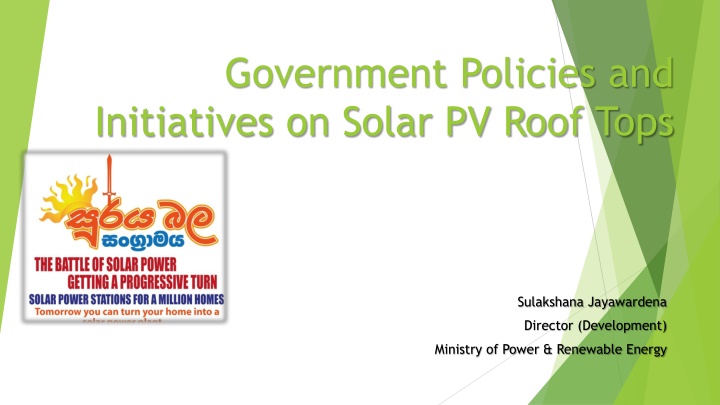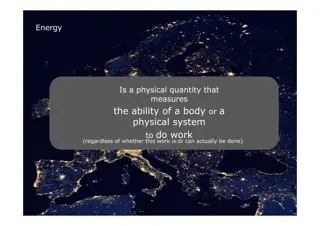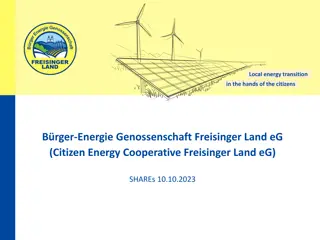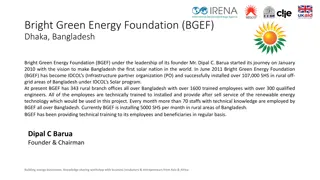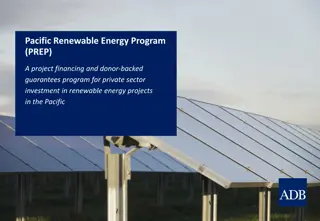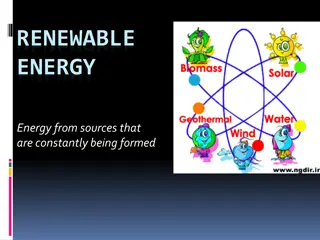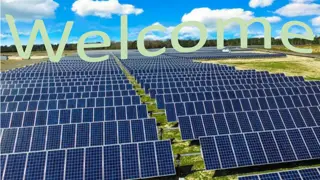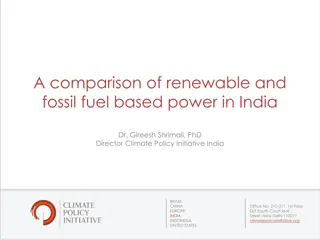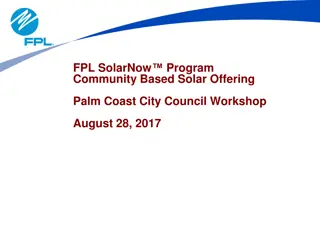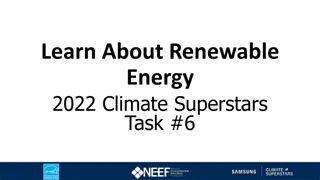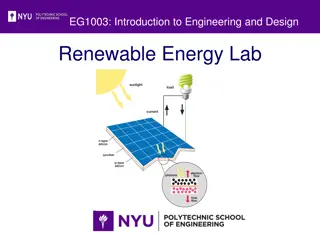Government Policies and Initiatives on Solar PV Rooftops by Ministry of Power & Renewable Energy
The Ministry of Power & Renewable Energy has implemented various initiatives and policies to promote solar photovoltaic (PV) rooftops in Sri Lanka. These initiatives include Net Metering, Net Accounting, and Net Plus schemes to encourage electricity generation through solar panels. The government aims to install 200 MW of solar rooftop systems by 2020 and reach 1,000 MW by 2025, benefiting 1,000,000 households. The initiatives also offer tax exemptions, financial assistance, and concessionary loan facilities to support the adoption of solar energy.
Download Presentation

Please find below an Image/Link to download the presentation.
The content on the website is provided AS IS for your information and personal use only. It may not be sold, licensed, or shared on other websites without obtaining consent from the author.If you encounter any issues during the download, it is possible that the publisher has removed the file from their server.
You are allowed to download the files provided on this website for personal or commercial use, subject to the condition that they are used lawfully. All files are the property of their respective owners.
The content on the website is provided AS IS for your information and personal use only. It may not be sold, licensed, or shared on other websites without obtaining consent from the author.
E N D
Presentation Transcript
Government Policies and Initiatives on Solar PV Roof Tops Sulakshana Jayawardena Director (Development) Ministry of Power & Renewable Energy
Out Line Background Methods under Soorya Bala sangramaya Policy Targets Government initiatives Challenges Ministry of Power & Renewable Energy
Background Net Metering Facility initiated in 2009 & 30 MW was connected. Soorya Bala Sangramaya commenced on 06.09.2016 Cabinet approval granted on 16.08.2016 100 MW was connected now Three Schemes 1. Net Metering 2. Net Accounting 3. Net Plus
1. Net Metering Generates electricity using solar panels fixed on premises and connected to the grid through net metering system. The consumer has to pay only for the net amount of electricity that he consumed. If customer s production exceeds his consumption, he can bring forward the balance and consume it in forthcoming months. No fee will be paid for the excess electricity produced. The customer will be given the choice of using the balance electricity within 10 year period.
2. Net Accounting If the generated units of electricity using the solar panels fixed on premises are greater than the amount consumed paid Rs.22.00 per unit during the first 07 years and from the 8th year he will be paid Rs. 15.50 per unit. If the consumption is greater than the generated, the consumer has to pay at the existing electricity tariff for the excess electricity consumed.
3. Net Plus Getting paid for the amount of electricity generated using the solar panels fixed on their houses/premises. There is no linkage in-between the electricity consumption and electricity generation. The customer has to pay for the electricity consumed according to the existing tariff. Electricity Board will pay for the total amount of electricity he generates. Rs.22.00 per unit during the first 07 years from the 8th year it will be paid Rs. 15.50 per unit.
Policy Targets 200 MW solar rooftop systems by 2020 Achieve 1000MW solar rooftop systems by 2025 1,000,000 households Ministry of Power & Renewable Energy
Government Initiatives Tax exemptions Quality of the systems Financial Assistance Concessionary interest rates Concessionary loan facility Solar facilities for Government establishments and religious places Solar Village concept Calculation of FIT for rooftop
Tax Exemption Facilities Solar Panels and inverters(PAL and NBT) Accessories and cables
Quality of the Systems Registration process Standards SLSI published 17 solar PV standards Technical Standards for Installation After Sale Services
Financial Assistance Concessionary interest rate-as per the budget proposal 2017 have Solar generation - Allocation 2017 is Rs.Mn. 1,000 1. Low Interest loan facility upto Rs.350,000 for households to 2. Convert Public Sector buildings to green energy by introducing Solar Roof top electricity generation Allocation 2017 is Rs. Mn. 350
Financial Assistance Concessionary interest rate-as per the budget proposal 2018 Enterprise Sri Lanka Credit Schemes - Category I Beneficiaries: Households Maximum Loan Amount (Rs.): 7,500,000 Interest rate to the Customer: 8% Category II Beneficiaries: Entrepreneurs Maximum Loan Amount (Rs.): Min. 7,500,000 (No maximum limit) Interest rate to the Customer: 8%
Financial Assistance ADB assistance for solar roof top systems LECO Loan facility Loan facility for CEB employees
Solar Village Concept Net plus Method For low income people / by service provider companies Sri Lanka Climate Fund is implementing 150 installations and some private companies Ministry of Power & Renewable Energy
Tariff Calculation - Rooftop Cost of the Systems 1.075USD/W Panel life-20 years, linear degradation to reach 85% at 20th year Inverter life -replaced once, on 11th year Annual plant factor-16% Grid availability-99% Cost of Debt-AWPLR+3% taken as 13.89% Cost of Equity-15.5% Debt Equity Ratio 75:25 Tenure of debt-5years O&M cost -0.5% of capital cost per year, A flat tariff is LKR 19.82/kWh
Challenges Technical issues/Intermittence nature-impact review with the capacity addition of 100MW Initial cost Non Availability of Concessional Loan facilities Infrastructure facilities over 50 kW system prior approval Organizational issues-payment mechanism After sale services Lack of Awareness among the stakeholders
Thank You! Ministry of Power & Renewable Energy Ministry of Power & Renewable Energy
